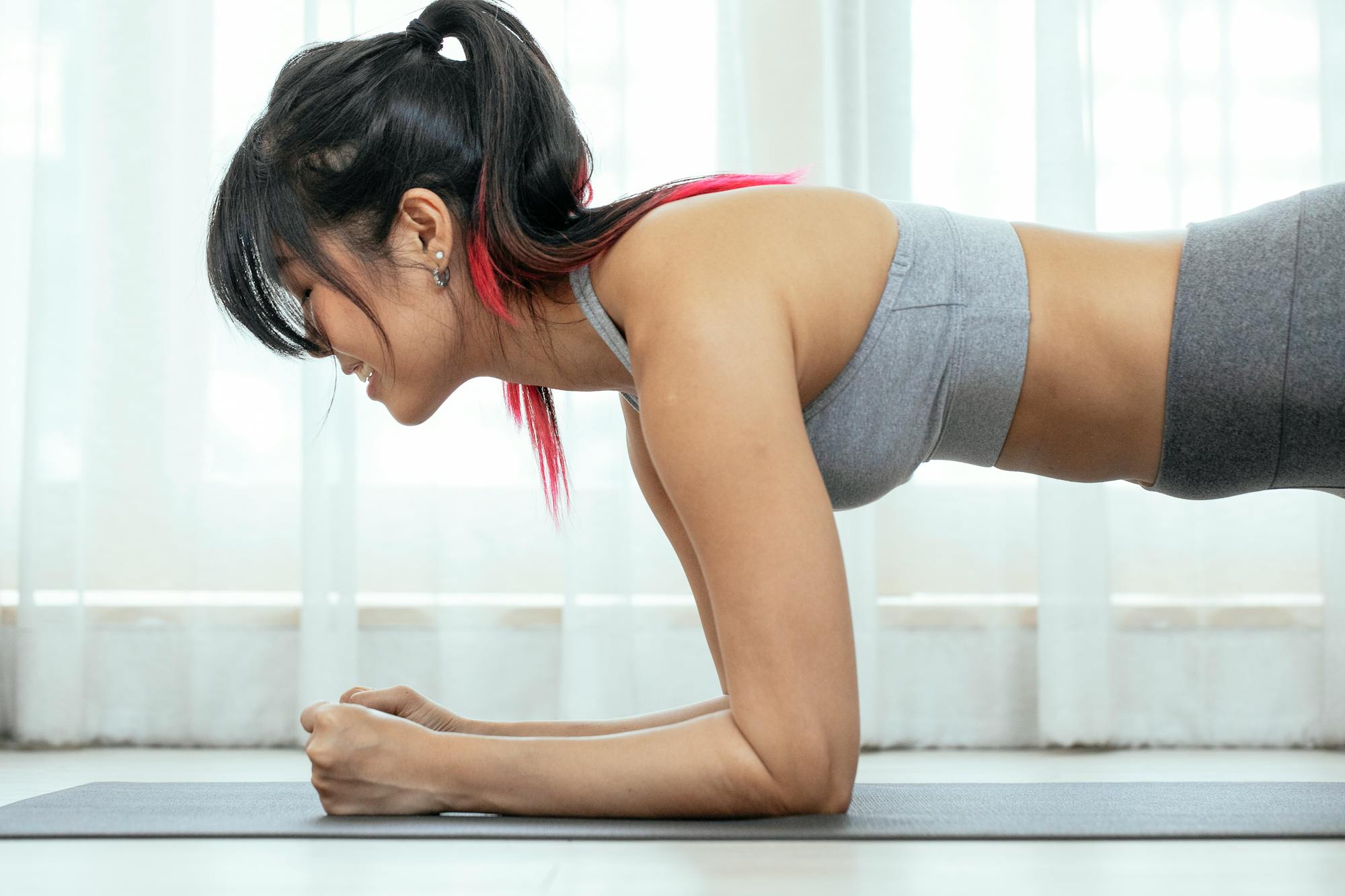
Isometric training (also known as static strength training) involves muscular contractions in which the length of the muscle does not change and there is no visible movement in the joint.
The word 'contraction' signifies a change in length (shortening) of a muscle but this does not occur in static strength training so the preferred term is static action not static contraction. Isometric exercises can be performed with 'sub maximal' muscle actions - which hold a weight steady on to a side for example. Here the force is not maximal as this would lift the weight further causing movement, change in the muscle length and joint angle. However, isometric exercises can also be maximal such as pushing against an immoveable object (like a wall or heavy weight). Both of these types of isometric action can increase strength and induce muscular hypertrophy although in practice maximal exercises are used for strength and conditioning whereas sub maximal exercises are used for rehabilitation.
Many sports require isometric actions such as climbing, mountain biking, judo, wrestling, skiing, gymnastics and horse riding. But one must be made aware that isometric exercises aren't the most dynamic actions (which most sports are - running and jumping) so do not increase the limbs maximal velocity and may only strengthen the muscle at the angle at which it is trained.
How isometric resistance works
Resistance in isometric exercises typically involves contractions of the muscle using:
- The body's own muscles (such as pressing palms together)
- Structural items like a wall or door
- Free weights, weights machines and elastic equipment where the weight is in a fixed position
- Pressure plate equipment that can give a digital read out of the force.
Advantages of isometric exercises
- Can achieve maximum muscular contraction as opposed to isotonic exercise (weight training).
- The workout is much faster. You can do each body part in as little as a minute (with a few seconds rest).
- It can gain strength but only isolated to the area you specifically trained.
Disadvantages of isometric exercises
- Decreased muscular endurance. When lifting weights (isotonic exercise) blood is pumped round the muscles frequently and increases muscular endurance. Isometric exercises don't produce the same blood flow.
- Building strength during a static contraction can potentially reduce the speed of the muscles response which may slow down your athletic performance.
- It can be very boring!
- Increased blood pressure. Isometric exercises increase blood pressure more than any other form of exercise which could lead to a ruptured blood vessel or irregular heart beat.
- Isometric exercise achieve gains through only 20 degrees of the angle you hold whereas lifting weights allows you to build strength through an entire range of motion.
Some tips for doing isometric exercises
- If you have hypertension isometric exercises may be dangerous as they increase blood pressure significantly. Even if you don't suffer hypertension it is important to breathe continuously throughout the exercise.
- Warm up thoroughly first as tears can still occur.
- Keep good posture throughout every movement working with a strong core. This will prevent injury especially in your back and joints and also keep yourself stable.
- The general consensus is that to improve strength (not rehabilitation) the most efficient use of isometrics is 15-20 maximum voluntary actions holding for 3-5 seconds. Doing this three times a week for at least 2 weeks should show results.
- Strengthening joints using isometric exercises should be done through multiple joint angles at the same muscle group to see results.
Some common isometric exercises are:
- The plank exercise
- Side plank
- V-shaped hold
Other isometric exercises can be designed from such usual exercises as the push up, shoulder raise, squat, calf raise, leg extension, hip extension and hip abduction. Here to make them isometric you need to hold the end position for about 5 seconds before releasing the pose.
In conclusion, it can be seen that isometric training serves a fruitful purpose in gyms and especially for training specific muscle groups for particular sports. It is also beneficial as a method of rehabilitation after injury. However, precautions must be made with how the movement is performed and in relation to blood pressure. With isometric exercises by only focusing on a limited range of movement may not be suitable for all.
Author:
Gemma Carter is a fully trained fitness and life coach. Visit her website at http://www.cartercoaching.co.uk